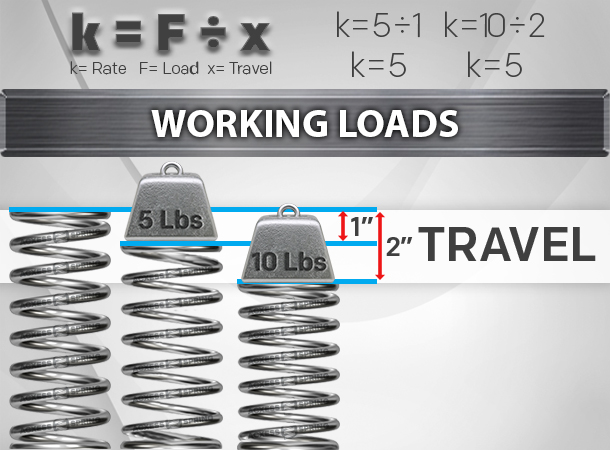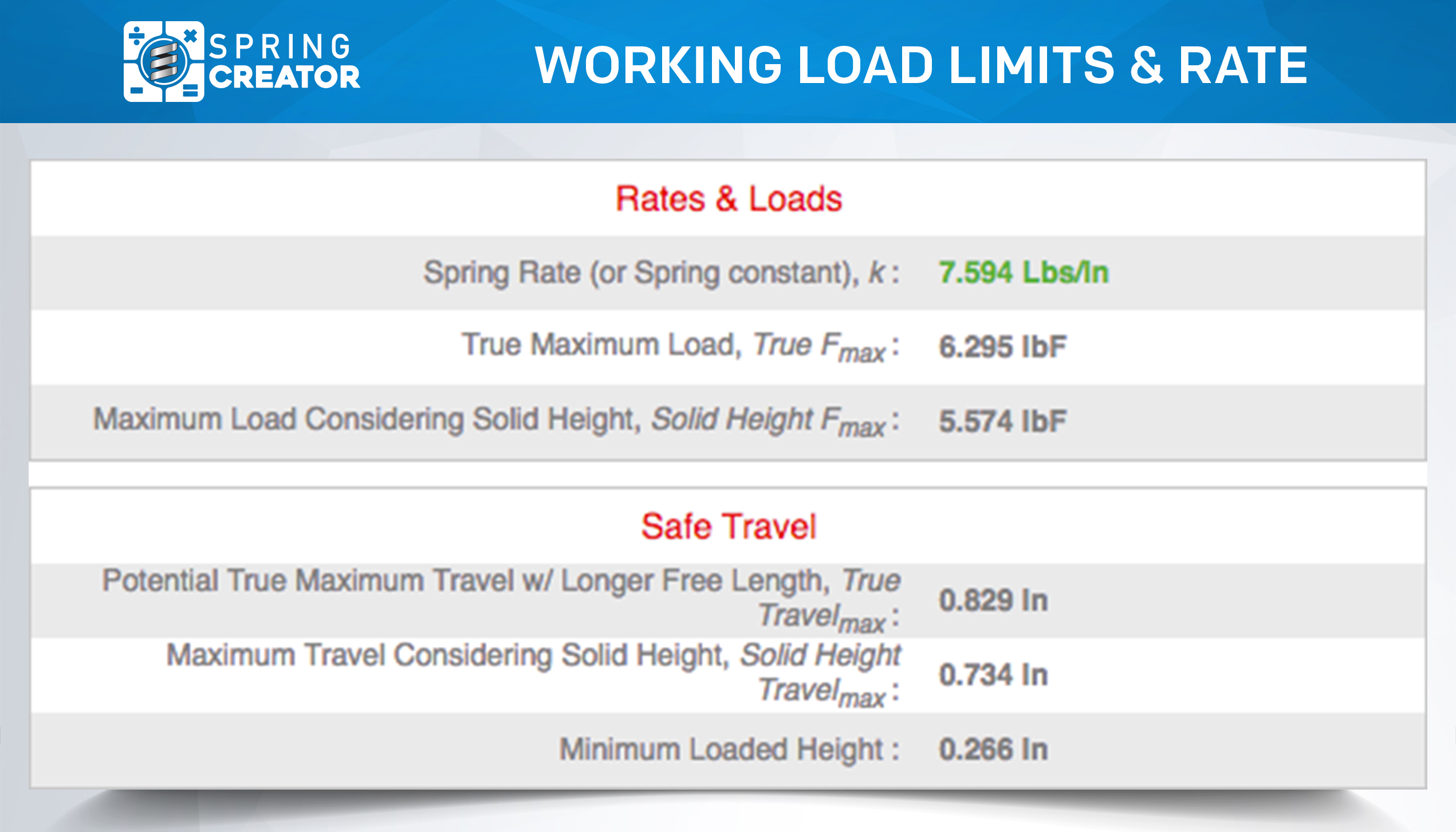Working Load Limit Calculator
Attention! Input results shown will be +/- 10% from middle value. Hint: The closer your min and max inputs are, the more accurate your results will be!
Attention! Input results shown will be +/- 10% from middle value. Hint: The closer your min and max inputs are, the more accurate your results will be!
Attention! Input results shown will be +/- 10% from middle value. Hint: The closer your min and max inputs are, the more accurate your results will be!
*Note: For the sake of simplicity, in this article we will focus on compression springs but the information also applies to extension springs although in the opposite direction (extending instead of compressing).
Working loads are both the load/force you're applying to the spring and the distance the spring will travel (compress or extend) under that force. Both factors make up the working loads.
Terminology that we will be discussing:
- Working loads
- Working load limit
- Max Load Considering SH (Solid Height)
- Max Travel Considering SH = Elastic Limit
To calculate the working loads, you need to use the spring rate. Either you divide the load by the spring rate to calculate distance traveled, or you multiply the distance traveled by the spring rate to calculate the load.
You can also calculate your required spring rate using working loads.
Working Load Formulas
To calculate load:
F = kxTo calculate distance traveled:
x = F ÷ kTo calculate rate:
k = F ÷ x- k = Rate
- F = Load
- x = Distance Traveled

Now that we understand the working loads we can better comprehend the limits. The working load limits are the maximum load your spring can withstand and the maximum travel it can reach (considering solid height). These limits are provided by the calculator and you can find them in the spring analysis of your design. They are listed under the following terms.
You can corroborate the working load limits by calculating the spring rate using both these values. You do so by dividing the Maximum Load Considering Solid Height by the Maximum Travel Considering Solid Height and the result should be equal to the spring rate. *Note: the spring rate is also provided by the calculator.

We recommend that you get acquainted with our Spring Creator calculator and verify this information by looking at the results provided in the spring analysis. You will also find all the information (spring rate, Max. load considering solid height, max. travel considering solid height, etc.) we are discussing in your blueprint. If you require additional assistance or have any questions or comments please contact us at: (951) 276-2777.






